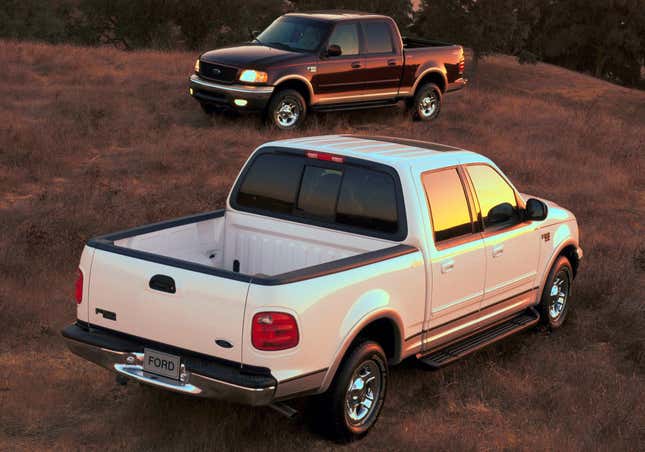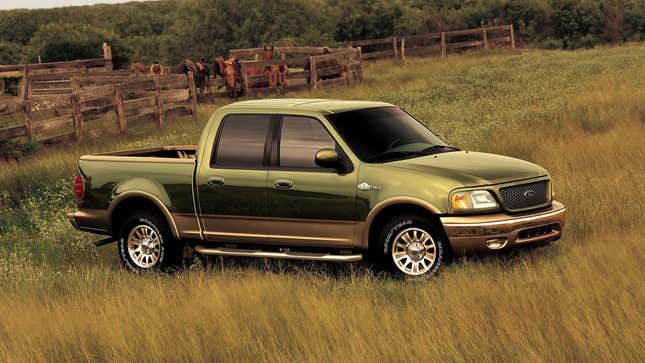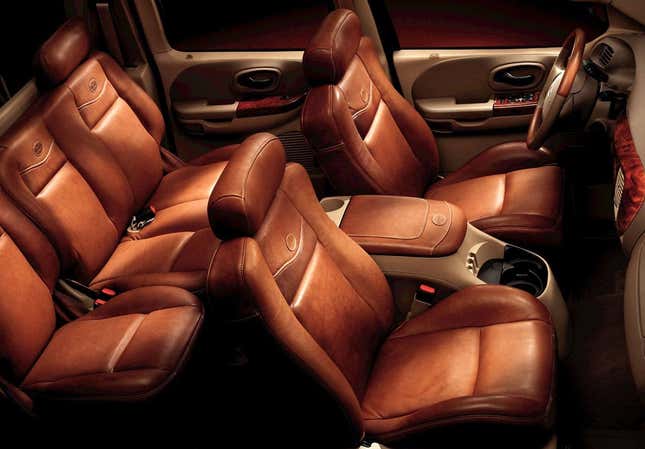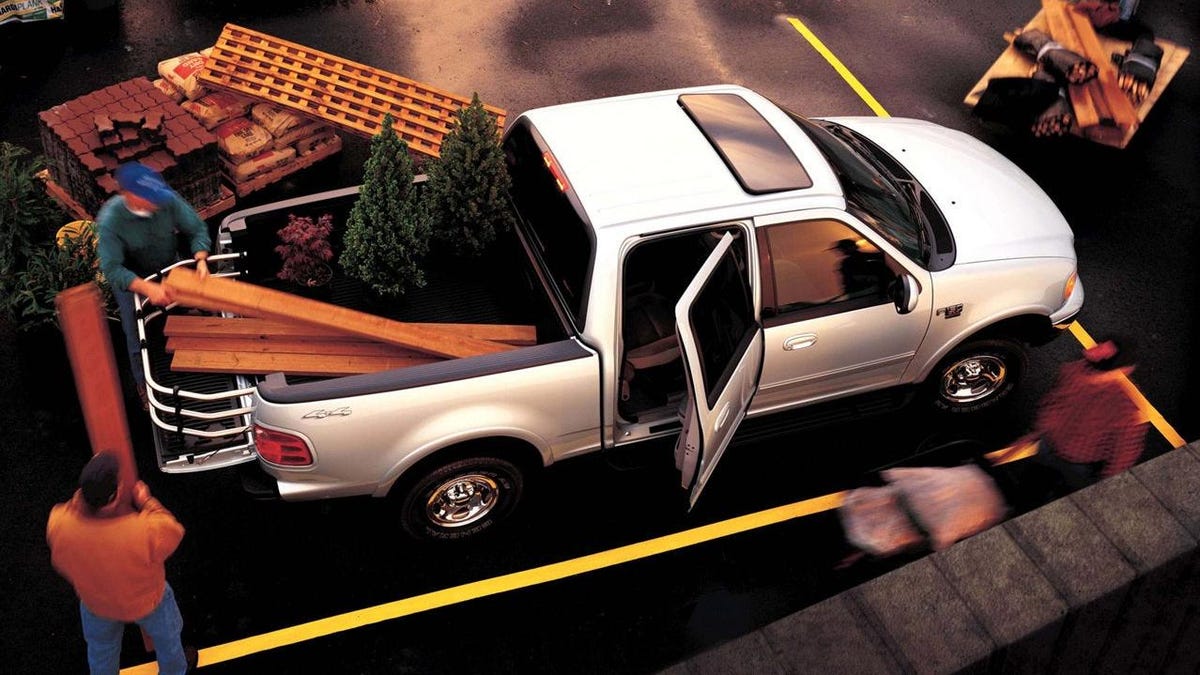The Ford F-150 was the best-selling vehicle in America last year and the year before that. And the year before that. You’d have to go back decades to find a year that the F-150 didn’t dominate sales in one way or another, but America’s love affair with four-door trucks took off in the early aughts, when Ford debuted the first full-size pickup with four doors in 2000 — much to my chagrin.
I’m kidding. I was a fan of the 2001 Ford F-150 SuperCrew because it looked like my family’s F-150 SuperCab (or extended cab) but with four doors and a stubby little bed. Even though four-door trucks had been around before the new millennium, Ford got away with calling the F-150 the “first” full-size (half-ton) double cab due to its weight rating and its front-hinged rear doors, as Car And Driver wrote upon the truck’s release:
In fact, the company unabashedly attaches that exact word —”first” —to the new F-150 SuperCrew, even though Nissan’s Frontier crew cab and the Dodge Dakota Quad Cab rolled onto the scene a bit earlier. How can this be? Simple. The F-150 SuperCrew is the first full-size crew cab with a gross vehicle weight rating (GVWR) of less than 8500 pounds. See? The Dakota crowds F-150 turf, both in power and work ethic, but it’s just small enough to qualify as a compact.
[…]
Be that as it may, the key to the F-150 SuperCrew —ditto for the Frontier crew cab and Dakota Quad Cab —is simple: To accommodate the extra set of sedan-style doors, the cab was stretched. And to keep overall length in check, the cargo box —sheet steel inside, composite outside, an industry first —was shortened.
The C&D review of the revolutionary F-150 SuperCrew goes on to explain that Ford’s “traditional” crew cab was the F-Series Super Duty, or F-350, which differed from Ford’s light duty trucks in meaningful ways, such as handling. Before the F-150 SuperCrew, driving a full-size truck with four doors meant moving around a much larger and unwieldy vehicle. Kind of like today.
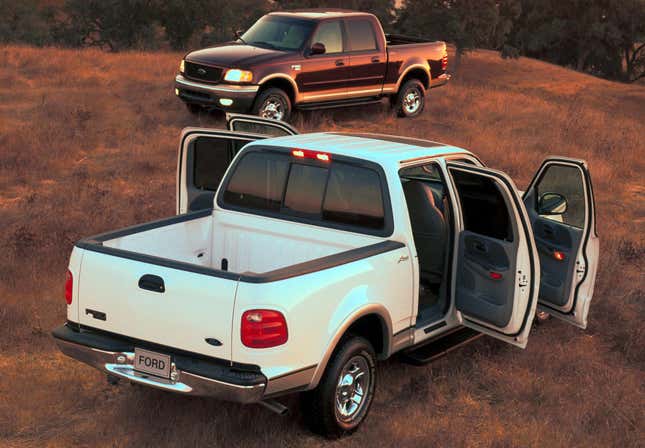
The 2001 F-150 SuperCrew got around this by extending its cab length by one foot, and reducing its bed length by 11.6 inches to yield a truck with the same 138.5-inch wheelbase as the F-150 SuperCab. You could haul more people, albeit less cargo in the SuperCrew’s 67.2-inch bed. But the tradeoff was hardly a sacrifice at all according to truck buyers in the U.S., and the rest is history.
I thought the original F-150 SuperCrew was great, and the early model was not yet oversized nor menacing. I couldn’t have know, however, that it would be one of the major factors behind full-size sedans dying off in ensuing years. By 2000, the U.S. was already in love with SUVs but the full-size four-door truck handily took over sales and has been in the lead ever since.
Folks who bought single cabs started buying extended cabs. And those who went for extended cabs traded in for double cabs, including my own family. Looking back on the 2001 F-150 SuperCrew, the truck was remarkably short compared to today’s trucks — meaning it was still easy to load and unload.
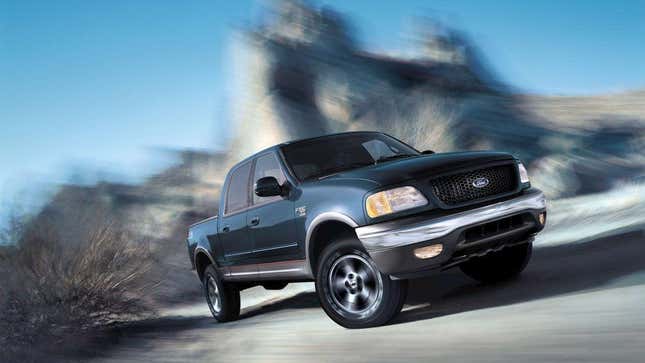
The introduction of the FX4 model gave the F-150 a moderate lift and paved the way for off-roaders like the Raptor. Comparing a first-gen F-150 FX4 and modern F-150 Raptor is jarring, but the progression is clear. The first F-150 SuperCrew is also the origin of high-end pickup trucks, according to Motor Trend.
The tenth-generation F-150 is when Ford first released the King Ranch (also as a SuperCrew) which went on to inspire others to make expensive trucks that rivaled luxury cars. The first SuperCrew basically changed our automotive landscape in the year 2000, like Y2K but with F-150 instead. For better or worse, it introduced modern trucks — as we know them — to the U.S. market.
